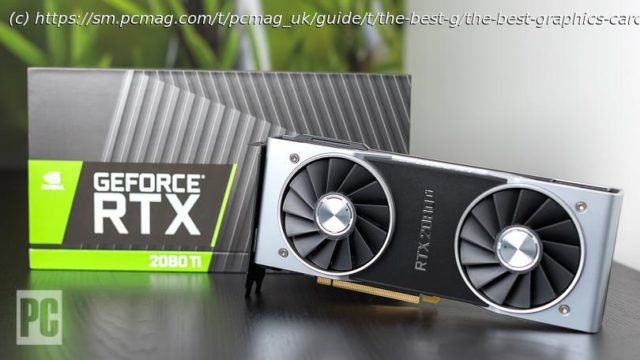You’ll need a powerful graphics card (or two) to run cutting-edge PC games at 4K resolution. These high-end GPUs are the top performers we’ve tested for pixel-packed gaming.
How to Choose the Right Graphics Card
Thanks to streaming servicessuch as Netflix, Amazon Prime, and even YouTube, it’s finally getting easier to find actual 4K (also referred to as “Ultra HD”) video content. But as awesome as 4K video looks, if you’re aiming to immerse yourself in a pixel-dense world, it’s hard to beat playing cutting-edge PC games in 4K.
Only the latest consoles—the Sony PlayStation 4 Pro and the Microsoft Xbox One X—will output games at 4K. But really, if you want to play brand-new AAA games at 4K with the best visuals, you’ll need a desktop PC equipped with a very powerful graphics card—especially if you want in-game eye candy dialed all the way up. After all, if you’re investing in a 4K monitor or a 4K TV for gaming, you want things to look as good as they can. Running games at 4K resolution but dialing down the detail and effects settings in your games is working at cross-purposes. So the PC graphics card you buy matters—a lot.4K Gaming: High-End Cards and Dual-GPU
At the moment, to deliver smooth frame rates at high settings at 4K resolution on a PC (that’s 3,840 by 2,160 pixels, for the record) with the most-demanding games, you’ll need to opt for one of the most powerful consumer-grade graphics cards available. These days, those cards include Nvidia’s “Turing”-architecture GeForce RTX 2080 Ti Founders Edition, the one-step-down Nvidia GeForce RTX 2080 Founders Edition and GeForce RTX 2080 Super, or one of the many custom-cooled and/or overclocked models based on these cards’ GeForce RTX 2080 or RTX 2080 Ti graphics processors (GPUs). The Best Graphics Card Deals This Week*VisionTek Radeon RX 5700 XT 8GB Graphics Card — $369.99(List Price $549.99; Save $180)PNY GeForce RTX 2080 Super 8GB Graphics Card — $749.99(List Price $839.99; Save $90)ASUS ROG Strix GeForce RTX 2080TI GDDR6 Graphics Card — $1,289.99(List Price $1,299.99; Save $10)
*Deals are selected by our partner, TechBargains
Also in play: Cards based on AMD’s Radeon RX Vega 64, the Radeon VII, and AMD’s latest addition to the lineup, the Radeon RX 5700 XT (as long as you don’t mind turning down your settings a bit). But none of these cards, GeForce or Radeon, comes cheap, most of them starting around $400 for the base models, and as high as $1,200 (!) for some third-party overclocked RTX 2080 Ti cards.
The GeForce RTX 2080 Ti is the card you’ll want to opt for, though, if you want butter-smooth frame rates at or above 60 frames per second (fps) in anything above high settings. Alternatively, you could pick up two GeForce RTX 2080 cards and use them in a paired NVLink arrangement, or scrape the bare minimum with a single GeForce RTX 2080 Super. In some games, that setup should deliver significantly better gaming performance than a single RTX 2080 Ti card. Note, though, that if you do go this route, multi-graphics setups can introduce side issues. Most games don’t ship on launch day with the optimizations to take advantage of multiple-card graphics, and some games never deliver multi-graphics support at all.
So, if you’re the kind of enthusiast PC gamer who likes to jump on games on the day they’re released, multi-GPU options aren’t ideal solutions. Also, you might run across issues with frame timing, in which onscreen game frames don’t get delivered exactly in sync, resulting in a subpar experience. For this reason, we recommend buying the best single card for the performance level you’re after, whenever possible.
And then there’s Nvidia’s aptly named Titan line of cards. The pricey Titan RTX is the beast of beasts, the crème de la crème, the absolute beefiest consumer-level graphics card you can buy today. And while technically the card is more powerful than anything that’s come before it, much of that power would be wasted on games alone.
These cards are made for much more than gaming, deployed more often in creative fields that do a lot of 4K and 8K video editing,3D rendering, or 3D modeling. In a price-for-performance sense, they’re way, way overkill for games, and they are often not optimized to take advantage of top titles as well as the gaming-centric GeForce RTX 2080 Ti cards (and its lessers) are.
So yes, while technically the Titan RTX could push 4K-gaming frames with grace, at that price you’re better off going with a single RTX 2080 Ti and spending the leftover $1,300 upgrading your RAM, CPU, and motherboard at the same time. Or saving the difference.4K Gaming Cards: The Best “Budget” Options
If your budget can’t quite bear laying out $600 or more for a graphics card, you can find some less-expensive cards that can handle 4K gaming at lower settings. You won’t get the absolute best visuals possible, but 4K gaming is technically attainable.
If you don’t mind running games closer to medium detail settings at 4K, but you still want to experience the pixel-dense glory of games running at 3,840 by 2,160, the AMD Radeon RX 5700 XT, Nvidia GeForce RTX 2070 Super, and GeForce RTX 2060 Super are all capable engines. Just remember that you won’t be able to play many games at the highest detail settings.
Speaking of the RTX 2070 Super, GeForce RTX 2070 Super cards start at around the $499 mark, challenging cards like the older GeForce GTX 1080 Ti on performance. The RTX 2070 Super will even beat the AMD Radeon VII, or at least tussle with it, in some games.
Overall, we can’t recommend going much lower than $400 on your card today if you’re serious about 4K gaming, though. One of the biggest concerns that any cost-conscious PC gamer should have when choosing new hardware is how “future-proof” a card is, and given that these options barely scratch the surface of pushing 60 frames per second (fps) on most current titles at middling settings, that viability will only continue to drop for new games released later this year.
Aside from gauging raw performance, you should keep a few other factors in mind when shopping for a powerful 4K-capable graphics card. Let’s run through these one by one. Consider the Target Display
The first consideration? The particular 4K display you’ll be using. If you opt for a 4K monitor with a DisplayPort 1.4 input (which has the bandwidth to deliver 4K content at 144Hz, or up to 144 frames per second), any of the current-gen cards here should serve you well. But if you are thinking of using a 4K television as a large-screen gaming display, you’ll likely be stuck using HDMI 2.0 to jack in.
Why? Most 4K TVs lack DisplayPort connectors. This locks you into using HDMI, and thus to 4K at 60Hz. This doesn’t actually matter all that much outside of the world of the new Nvidia BFGD (short for “Big Format Gaming Display”) monitors that will run 4K at up to 120Hz. Though it is very much game-dependent, today no single GPU will push AAA games at max settings in 4K much beyond 60 frames per second.
Beyond TVs, though, gaming monitorshave seen more evolution in the last two years than in practically the whole decade before. High-refresh-rate (that is, above 60Hz) 4K monitors are now an option and available from multiple makers. Yes, some are more expensive than a beater of a used car (averaging anywhere between $1,800 to $2,000 at this writing). However, if you have that kind of cash to throw around, they are worth a look.
Options like the Asus ROG Swift PG27UQ and the Acer Predator XB3are typical of this (admittedly rather niche) market, and both provide 4K screens that can be boosted as high as 144Hz under specific conditions.






